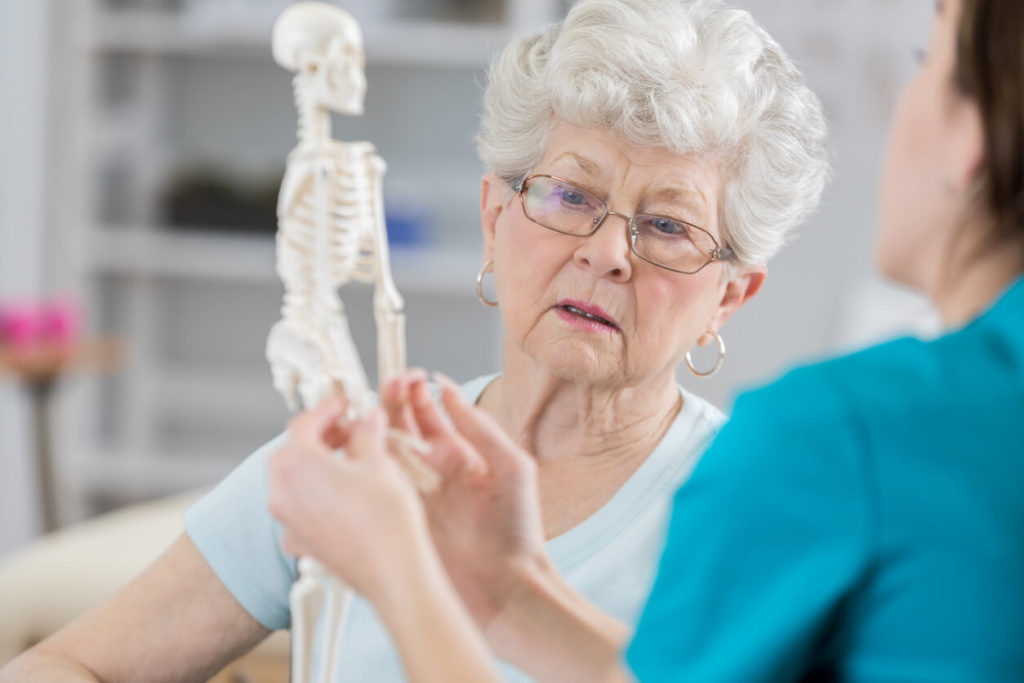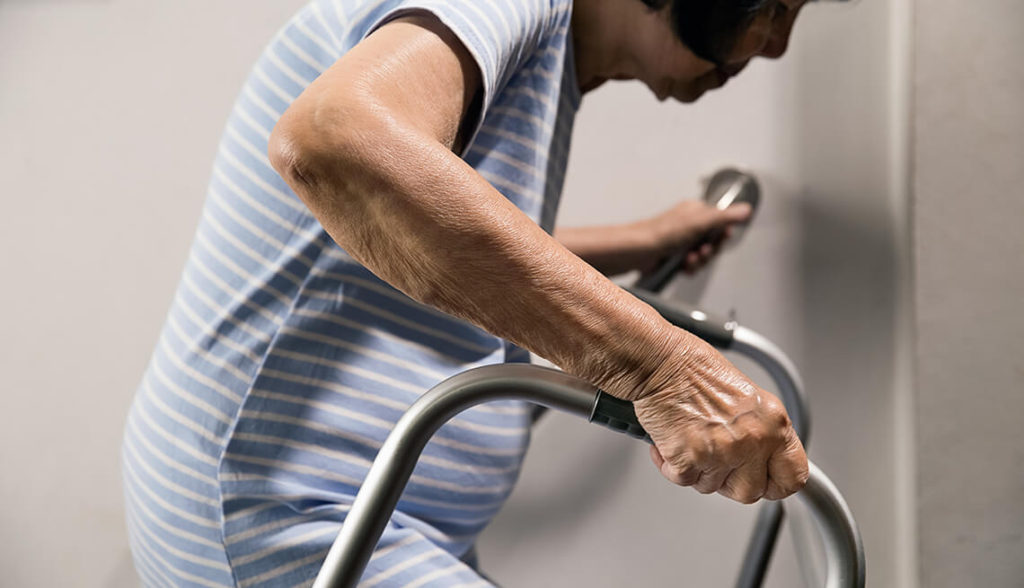Is osteoporosis common in the elderly?
Osteoporosis is more common in the elderly than most assume. It is estimated that around 10 million individuals in the United States suffer from osteoporosis. Furthermore, the vast majority of these people are elderly individuals. About three-quarters of bone fractures are suffered by individuals who are 65 years of age or older. Let’s take a closer look at osteoporosis including osteoporosis emotional effects, osteoporosis fall prevention, assistive devices for osteoporosis and why weakened bones are such a problem throughout the aging process.
How does osteoporosis affect the elderly?
Osteoporosis causes the bones to become brittle and fragile throughout the aging process. Senior citizens suffer weakened bones as they age, meaning the chances of a break are that much higher as the decades go by. The higher risk for a break is the result of the loss of minerals in bones.
It is possible for osteoporosis to progress for several years, going completely undetected, especially if the patient fails to visit with a physician for an annual checkup. A broken bone stemming from osteoporosis is referred to as a fragility fracture. Such a fracture can make it challenging to walk, exercise, work and ultimately live a normal life.

Risk factors for elderly falls
Elderly falls are often caused by weakened muscles and bones that struggle to support the weight of the body above. Certain seniors struggle to walk and maintain their balance while on their feet as they spend the majority of the day seated. Some of the top risk factors for senior falls included poor balance, impaired gait, a history of falls, visual impairment, cognitive decline and slowed reaction time.
Fall prevention tips for elderly
The senior in your life is not powerless when it comes to potential falls and breaks. Mindfulness combined with planning will help prevent painful and potentially deadly falls. If the senior you love so much has become weak to the point that he or she does not have the strength necessary to exercise, walking will become increasingly difficult. Try to encourage your loved one to gradually build stamina and strength little by little to maintain muscle mass. Even altering dietary intake to include colorful and nutritious fruits and vegetables will help maintain the muscle strength necessary for walking.
Seniors are also advised to avoid wet and/or icy walking surfaces, to walk slowly, wear footwear appropriate for walking and use walking mobility equipment when necessary. Seniors and their loved ones should also be aware that medications have the potential to cause dizziness that makes it difficult to maintain balance while walking, creating the potential for a life-changing fall.
Don’t overlook the importance of vision. If your loved one has not been to the eye doctor in a year to get his or her eyes checked, schedule an appointment. A new pair of glasses will help your aging parent or other relative see clearly and avoid a slip/trip hazard in or near the home.
What is the best osteoporosis treatment for elderly patients?
If your parent or other loved one has osteoporosis, there is no reason to suffer in silence. Several treatment modalities are available for this condition. The doctor will likely start out by recommending lifestyle changes. Eating healthy and exercising bolster muscle strength to the point that the chances of a fall and subsequent break are greatly reduced. Consuming food high in calcium, vitamin D and other nutrients and minerals will strengthen bones all the more. Quit smoking, avoid alcohol, pass on the caffeine and you will do even more to improve bone strength and health.
The doctor might also recommend bisphosphonates. This medication hinders the body process triggered to break down bone, meaning the medication has the potential to both treat and prevent osteoporosis. There is also the option of hormone replacement therapy drugs such as teriparatide that simulate hormone activity and raloxifene that allegedly prevents/treats osteoporosis.

How to fall-proof your home
Even if your aging parent incorporates the changes noted above, there is still a chance he or she will trip and suffer a break if the living space is not prepared accordingly. All potential trip-and-fall hazards should be removed. Slowly walk through the entirety of the house to identify all possible causes of slips, trips and falls.
Unreliable stairs, extended electrical cords, items that protrude into walking paths and clutter in the way all heighten the chances of a fall and broken bone. Eliminate all such items including throw rugs and loose carpet to fall-proof the home. When in doubt, err on the side of safety by adding too many mobility aids and pieces of equipment to prevent falls rather than too little. As an example, handrails and grab bars strategically positioned throughout the home will facilitate easy transitions.
Assistive devices for osteoporosis
Lifestyle changes are only one way to minimize the impact of osteoporosis, potentially delay it or prevent it altogether. Assistive devices are available to make living with osteoporosis that much more tolerable. As an example, mobility aids help patients move around without enduring strains and pain that would slow healing after a fracture.
Walking canes and medical walkers are two additional examples of assistive devices for osteoporosis. Some patients use hip protectors to reduce the chances of the hip bone breaking as a result of a fall. Certain patients even go to the extent of adding stair lifts to help overcome the challenge of walking up and down stairs.
How can home care help seniors with osteoporosis?
Instead of going to the extent of modifying the entirety of the home to help your senior with osteoporosis, consider the benefits of home care for seniors. Home care brings a medical professional directly into the patient’s home to help him or her with mobility challenges, bathing, grooming and other components of life that require bone strength and general stamina. Home care can also include assistance with meal preparation and other activities of daily living that help the senior you love enjoy a decent quality of life after being diagnosed with osteoporosis.


